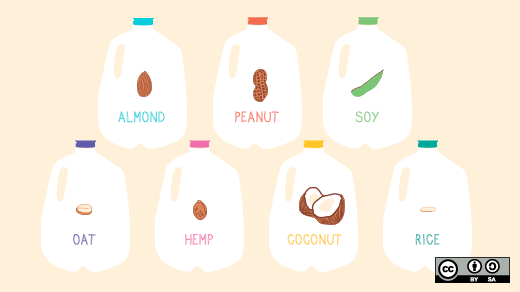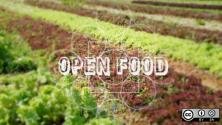My son was recently put on a temporary alternative milk diet, no cow, rice, or soy milk. I panicked. My entire life my family has been a cow's milk household—I don't know a life without dairy products. We had been making our own yogurt, so I hoped that would help. Thank goodness, my son and my family don't have a nut allergy. Otherwise I would panic more.
First, I shop. Then, panic, again. Finally, I do the math. And, yes, panic. Cow's milk is usually $2.99 (USD) or more for a gallon where I live, and almond or coconut milk is around $2.99 (US) for half that amount.
When I used to teach at a public high school in a city nearby, I knew kids who only drank cow's milk because it was offered in the free or reduced lunch. These kids were poor and otherwise would not have drank cow's milk. Instead, they would buy and drink a two-liter bottle of soda because it was .99 cents or a third of the cost of a gallon of cow's milk. My family typically buys two gallons or more of milk each week, and that might not sound like a lot of money, but librarians don't make much and every penny seems to count—or more like disappear.
I grumble and buy some almond milk at the supermarket but start to wonder about life and milk in the present and past in the United States. About 97% of milk products in America come from cows. Why? Partly because colonists brought cows to Virginia in the 17th century, and England is a dairy mecca.
Cows require land and grass to eat, which often requires irrigation. I'm not a mathematician, but cows cost money and land costs money. If you weren't a land owner in the 17th century, you might have been able to use a common or public space to graze your cow. Some people bought shares in a cow or bartered for cow milk. Slaves, on the other hand, didn't have any options.
Today, U.S. schools must offer (cow's) milk at every meal, and about a quarter of schools offer rice or soy milk. Many schools, however, require a doctor's note to decline the cow milk offered in a school lunch program or to substitute the cow's milk. The U.S. government's website features a Milk Matters public health education campaign to promote calcium consumption, but there's no mention of almond or peanut milk on the lactose intolerant page as a substitute or about casein intolerance either. In fact, the site mentions low-fat or fat-free milk, yogurt or cheese. My son was clearly out of luck according to the National Institute of Child Health & Human Development.
So, I started to wonder about life and milk in the present and past around the world. I picked up my yoga book and The Multicultural Cookbook for Students, a former public library book I might add that I bought for .25 or .50 cents years ago, and read. I also look online for alternative recipes about making nut milks from sites such as One Green Planet.org. I begin to ponder...
Poor people in Africa and Asia do not own land, nevermind cows. The soil is poor too. And in India, the cow is sacred. Coconut, peanut, and almond milk are the main alternatives. That's how it is today for these folks, and that's how it's been for thousands of years. Millions, if not billions, of people live on alternative milks. Peanuts, after all, were brought to America on slave ships from Africa, and make a protein-rich milk drink.
I stop and think if I made my own peanut or almond milk, how wonderful it would be. No chemicals, additives, or preservatives. No money going to a dairy corporation or conglomerate. More nutrients and potentially more calcium. Sugar and carbohydrates are nil or nearly and a third or less of the calories of cow's milk if left unsweetened. I just need some nuts, water, time, and patience to see how difficult or easy it is to make an alternative milk.
Here are my steps:
- blanch 1 cup of almonds using 4 cups of boiling water
- cover them in a bowl and wait for them to cool, then shuck the shells off
- combine the shells and the water (from the bowl) in a blender and mix
- strain the the liquid through a cheesecloth into another pot
- drink and smile
The code for making milk is cracked. And making almond and peanut milk is easy—like it is for millions of people in Africa or Asia.
Food and drink regulation in the U.S.
In July this year, New York City mayor Bloomberg came under attack for trying to regulate the food and drink industry. The food industry claims it can regulate itself, but the tobacco industry and others have proven they don't act in the interest of public health or public trust. My take is they act in the interest of profits, at all costs it seems.
It's the lack of government regulation in the food and drink industry that is part of the problem in our country's fight against issues like, childhood obesity. The other problem is we don't stop, think, and question the status quo often enough.
The truth I've discovered is it's not so bad if your child is lactose and/or casein intolerant. You might actually enjoy the alternatives and have more pennies in your pocket too. If it's good enough for people around the world, it's good enough for me, and more importantly, my son.






5 Comments